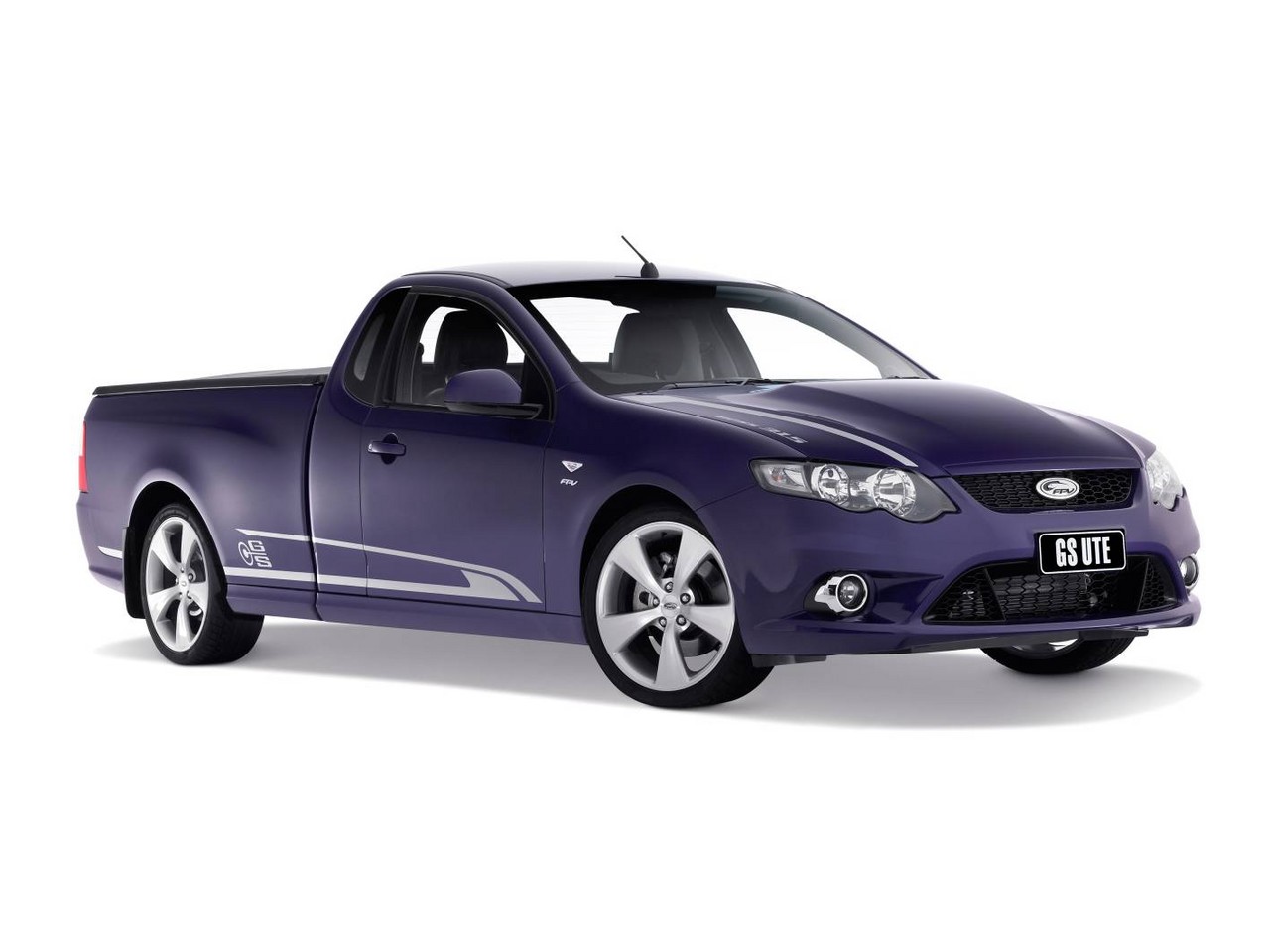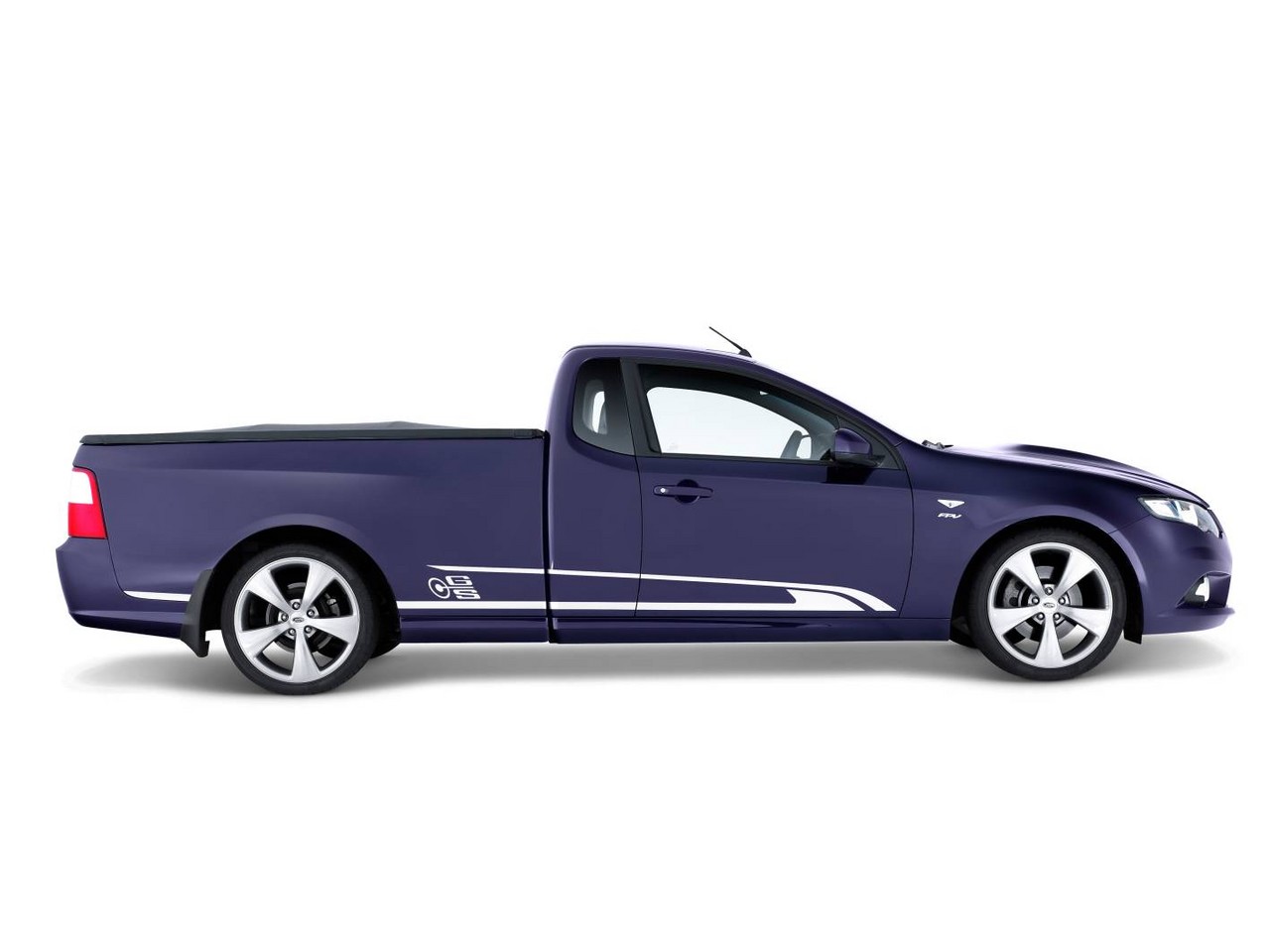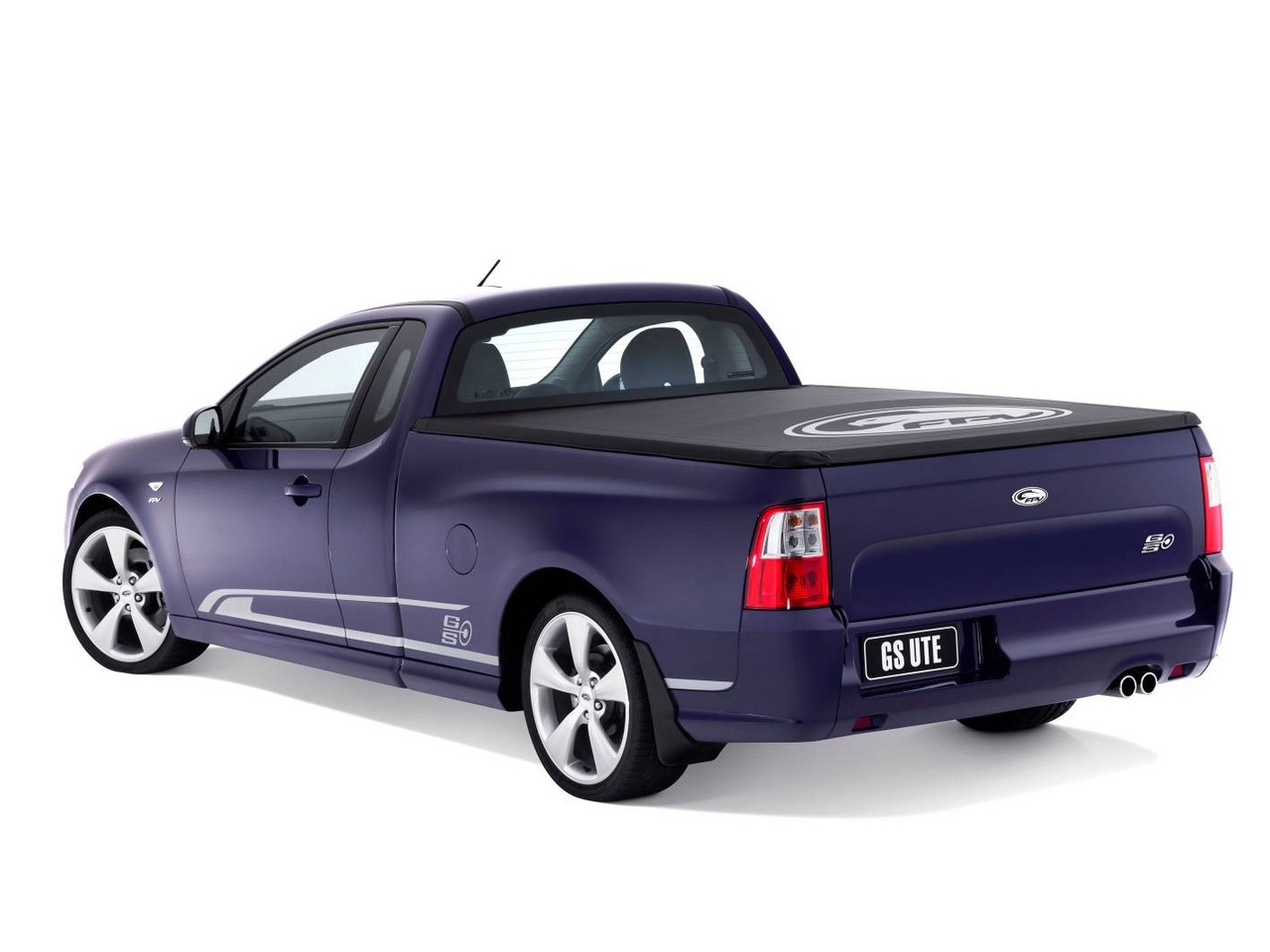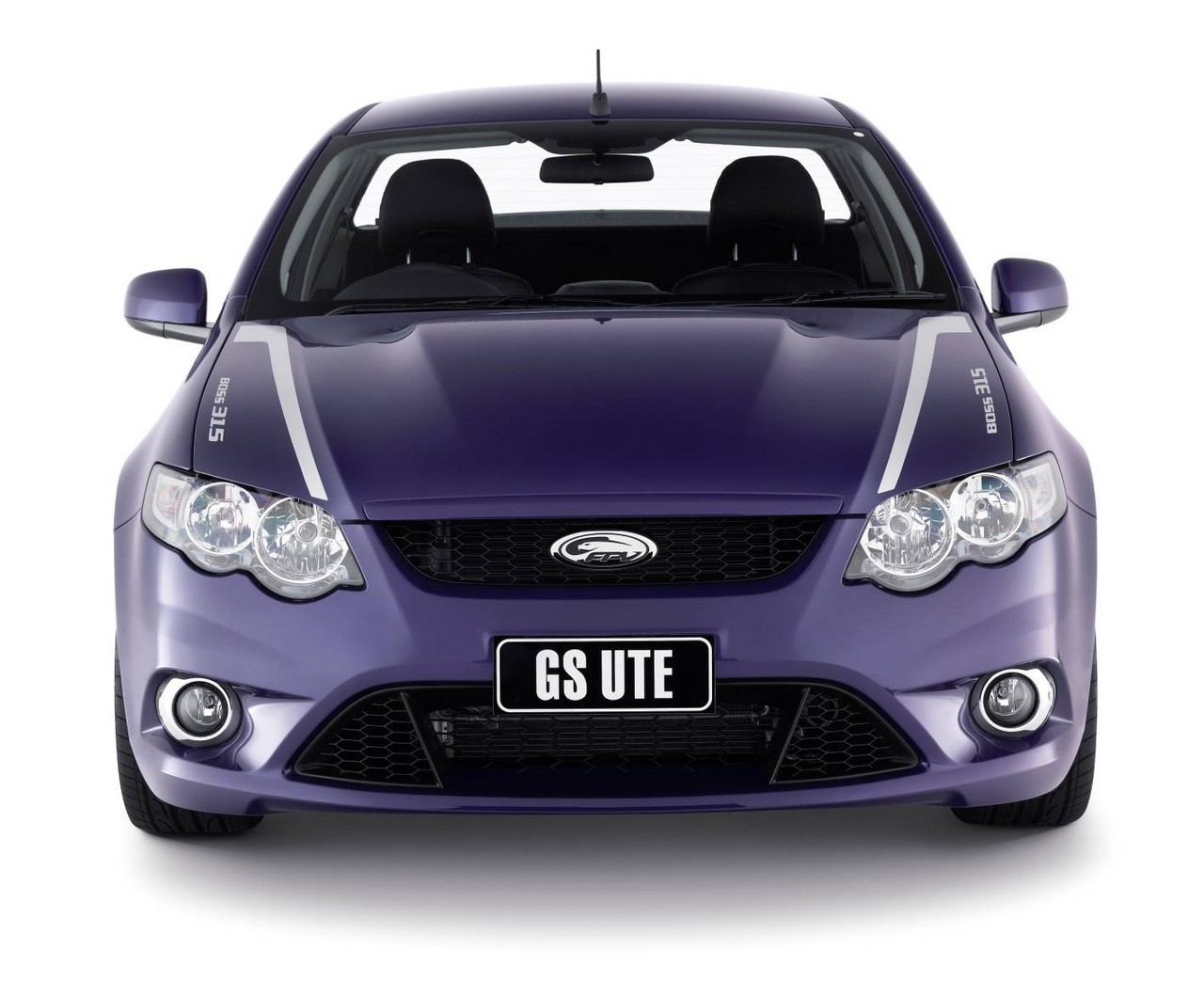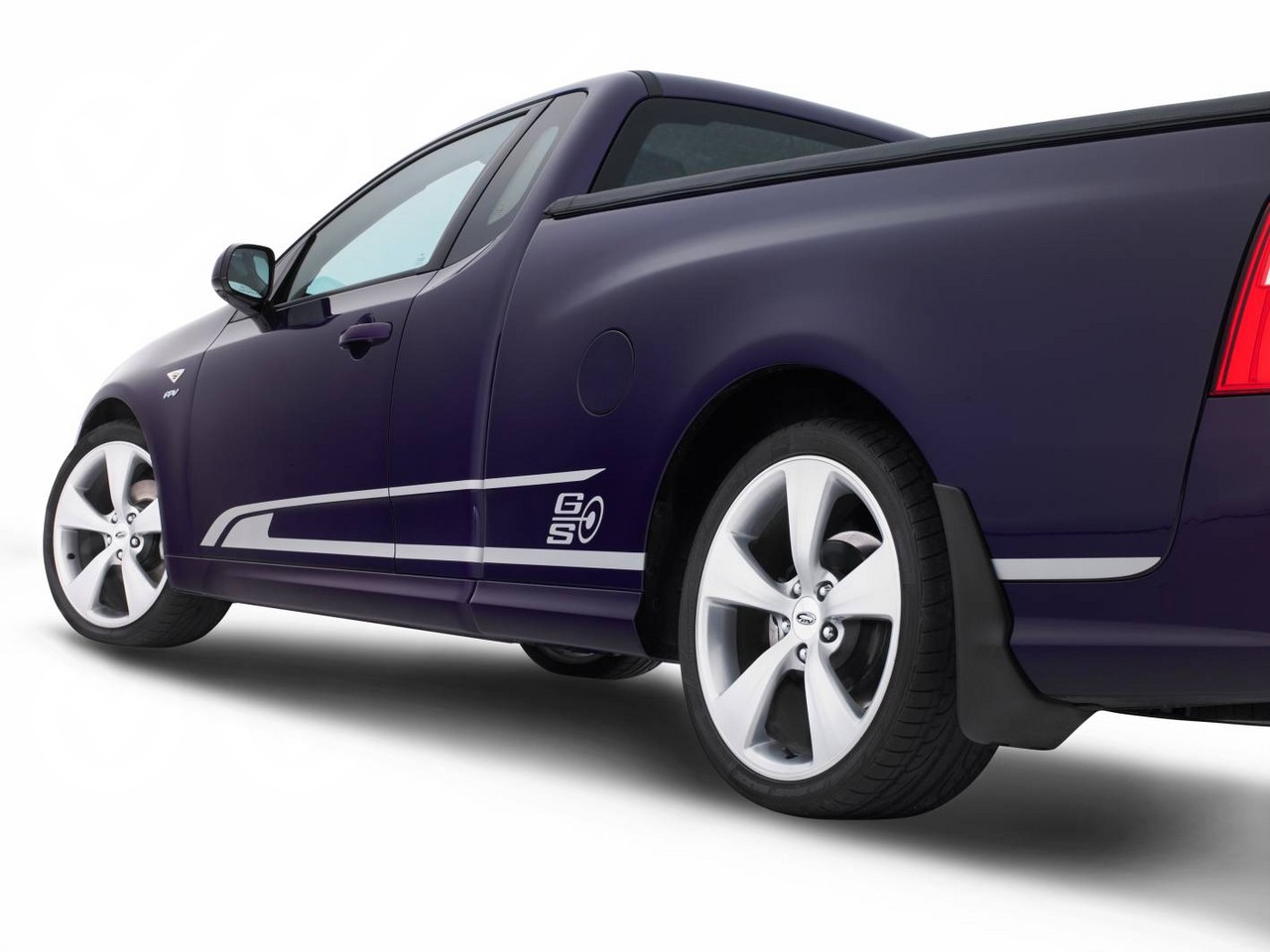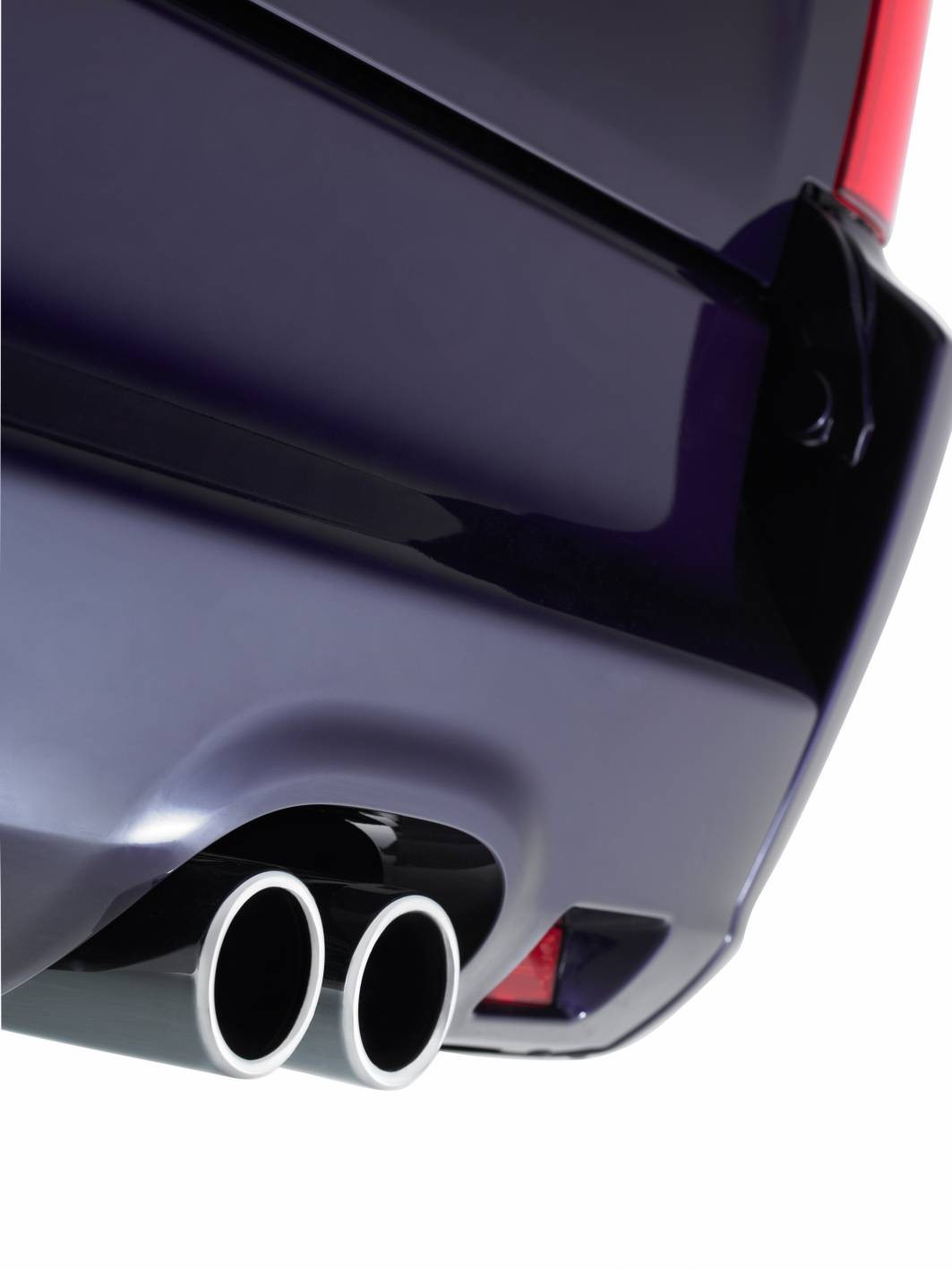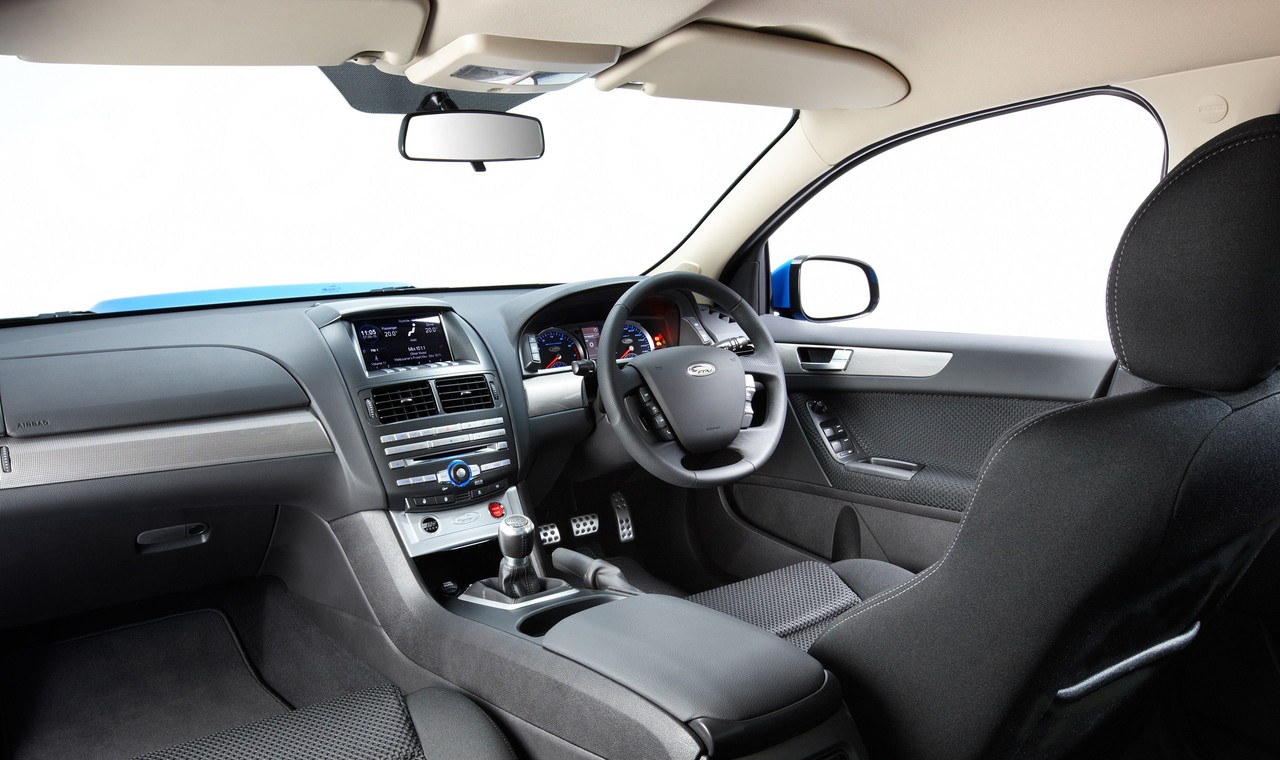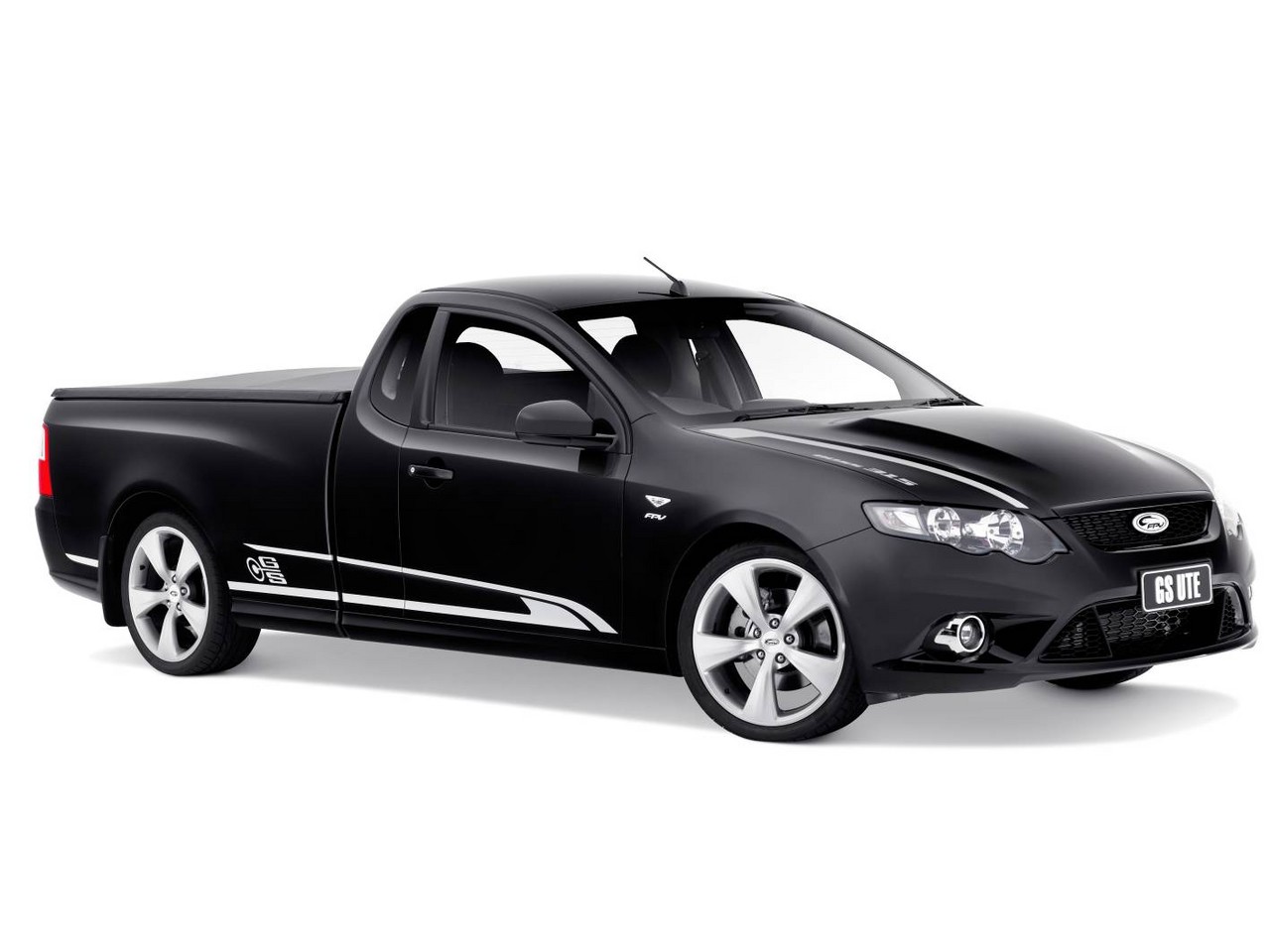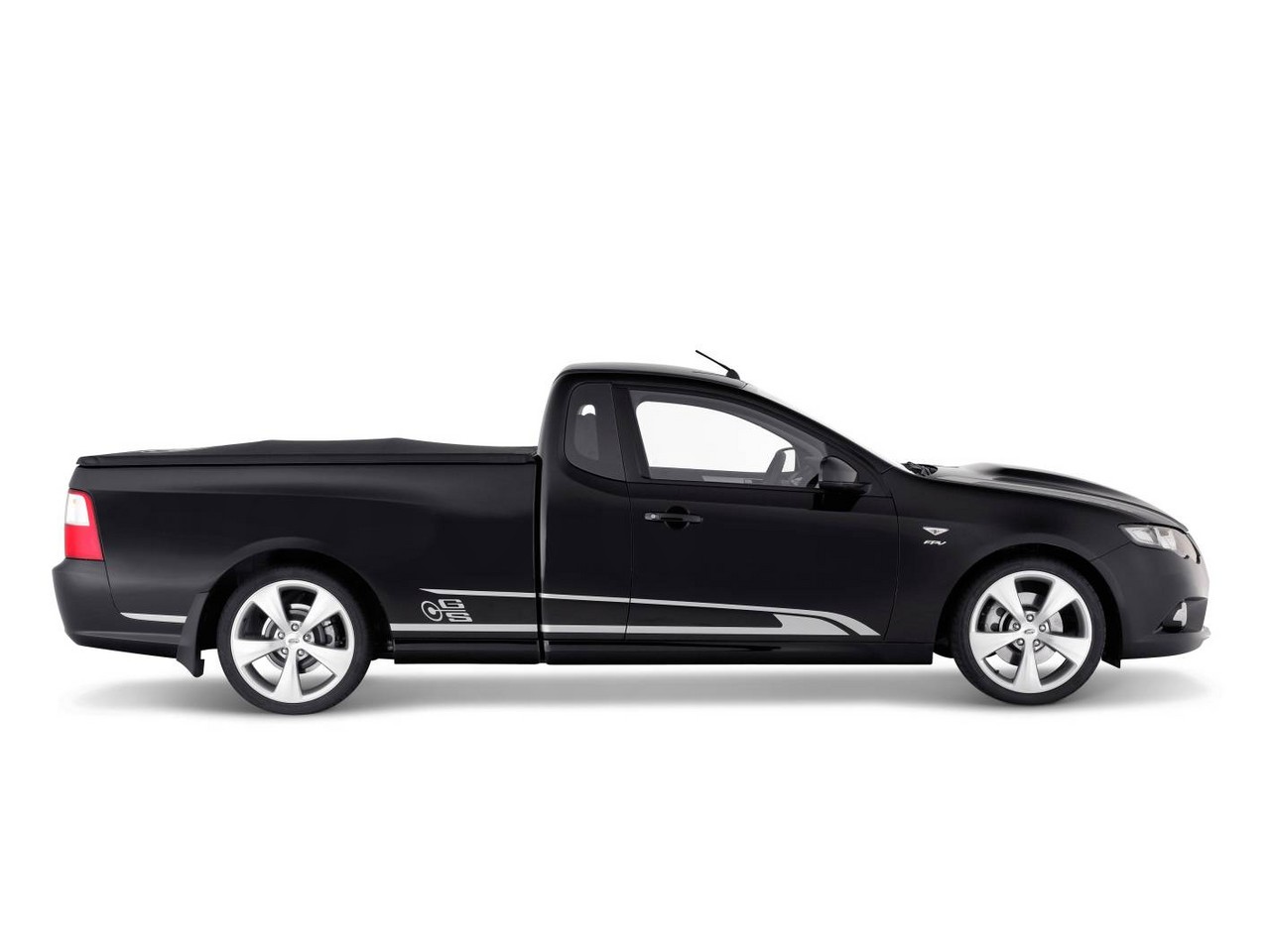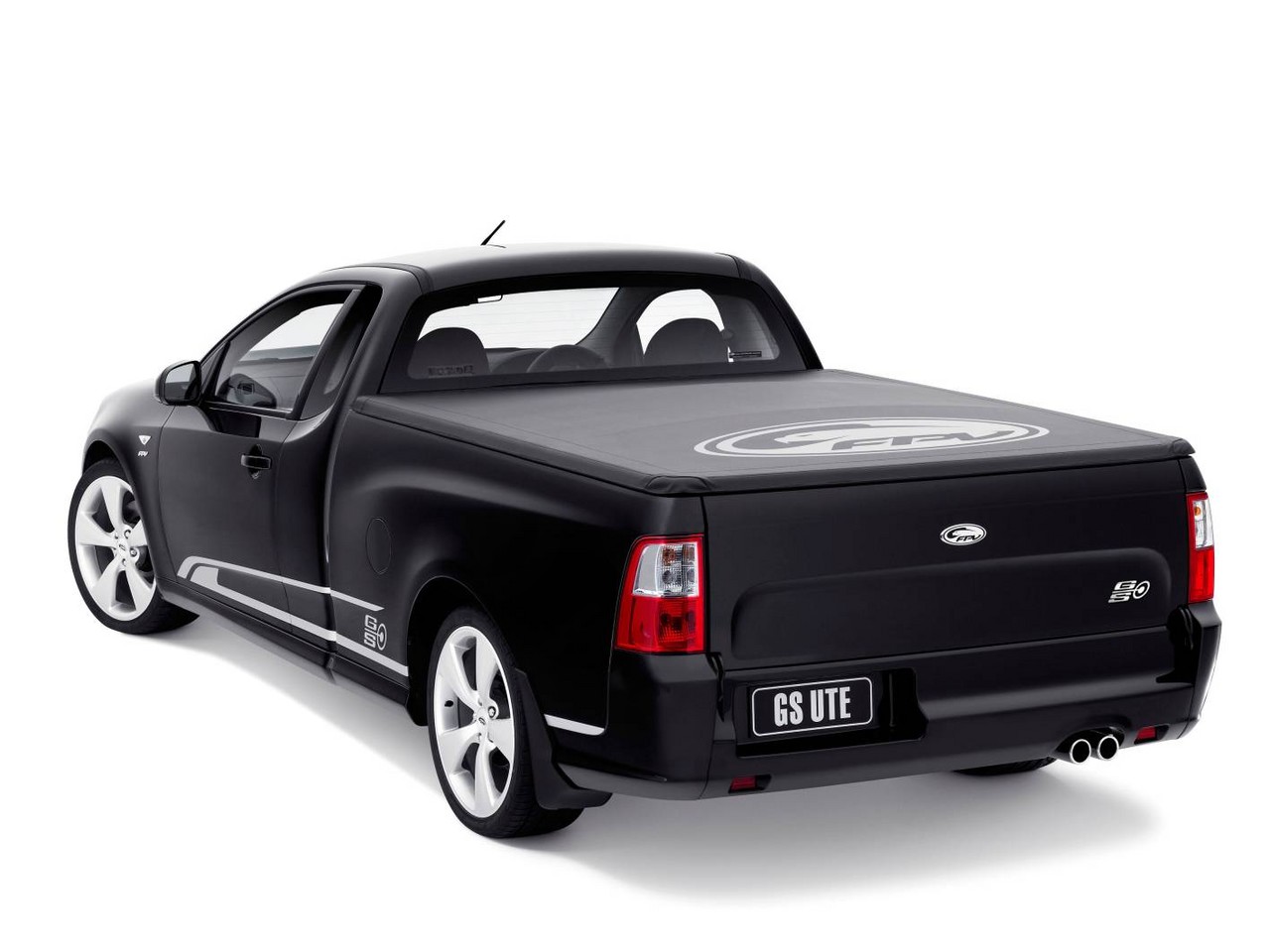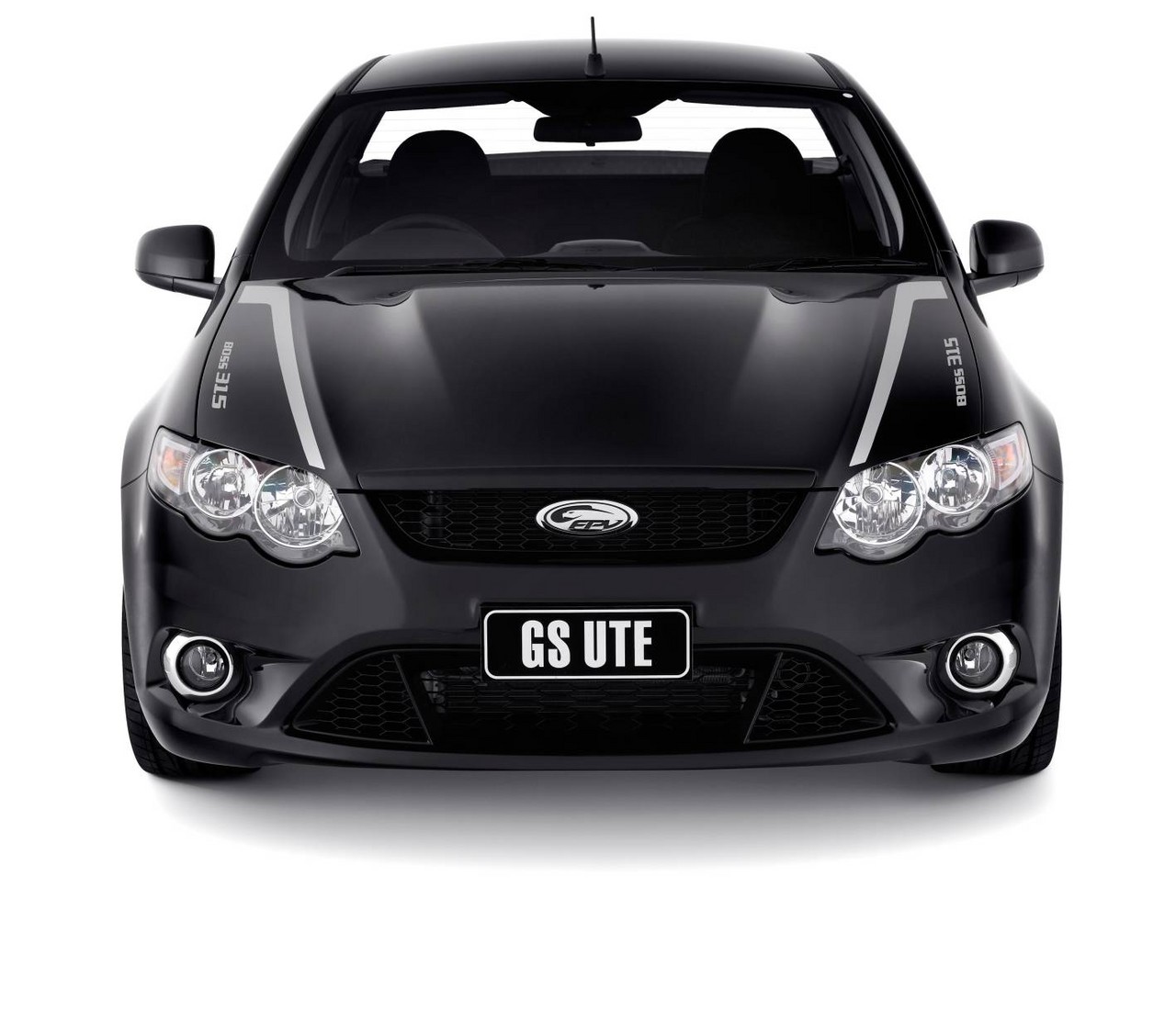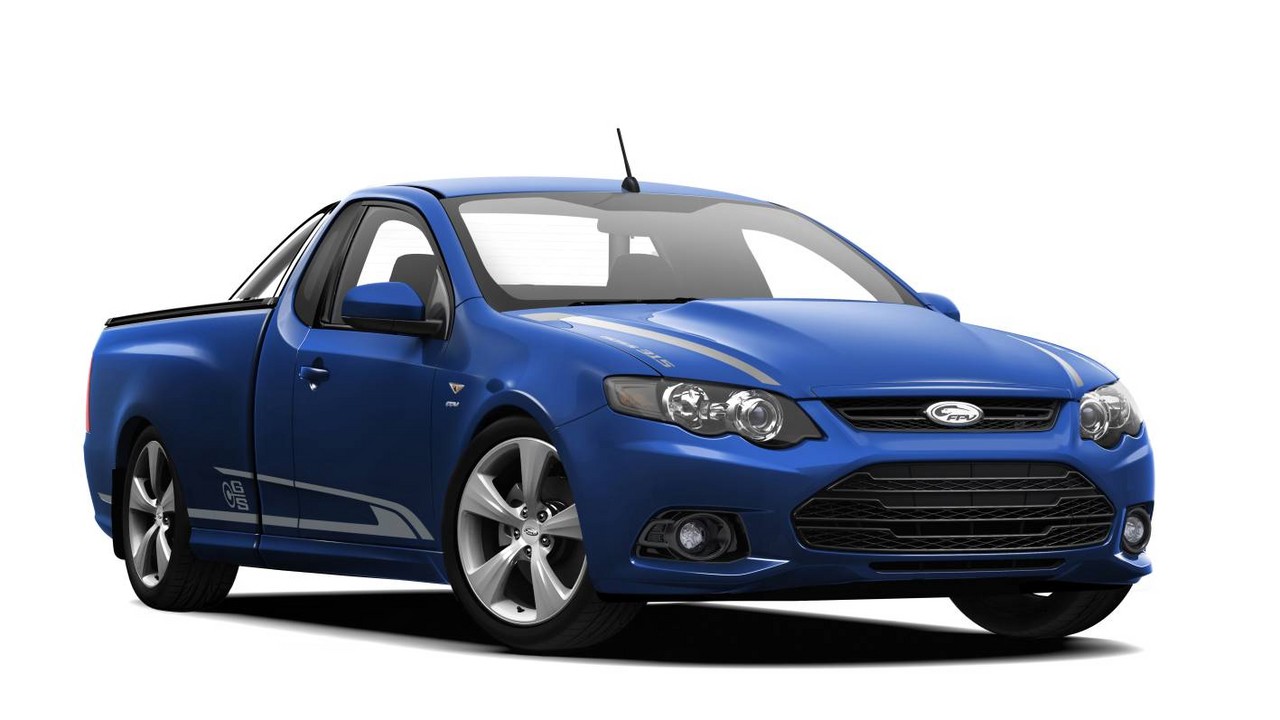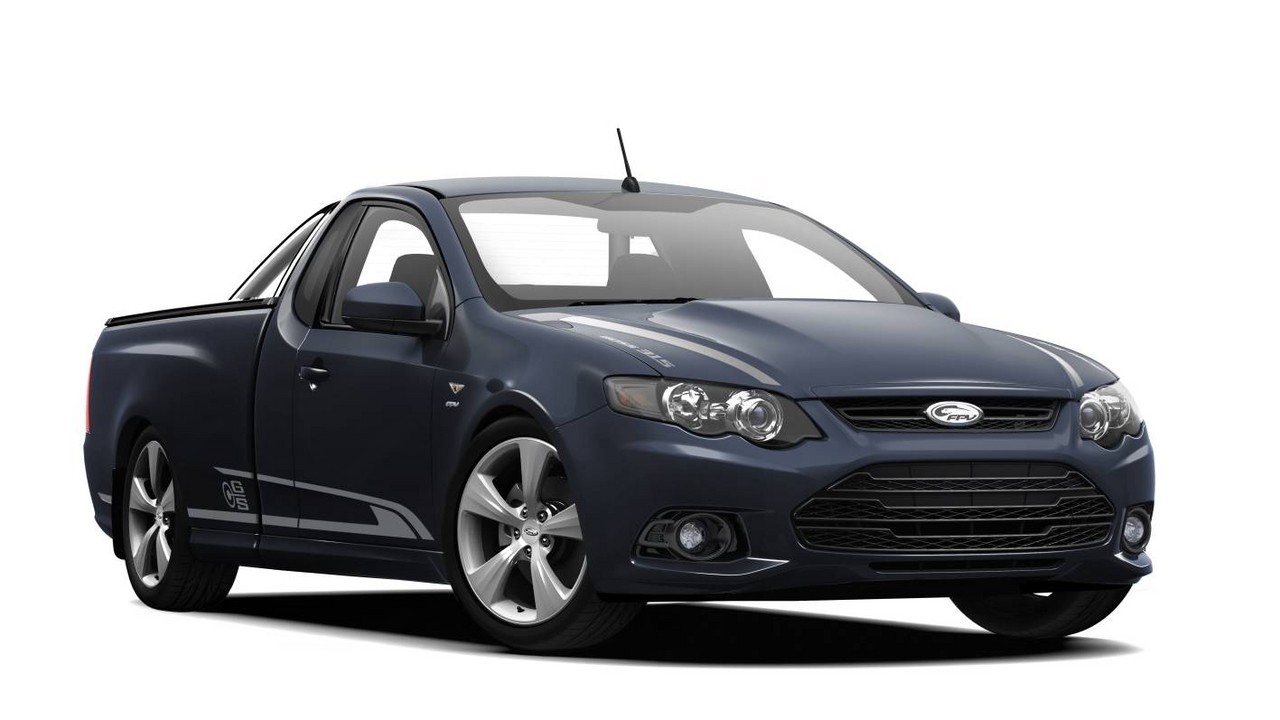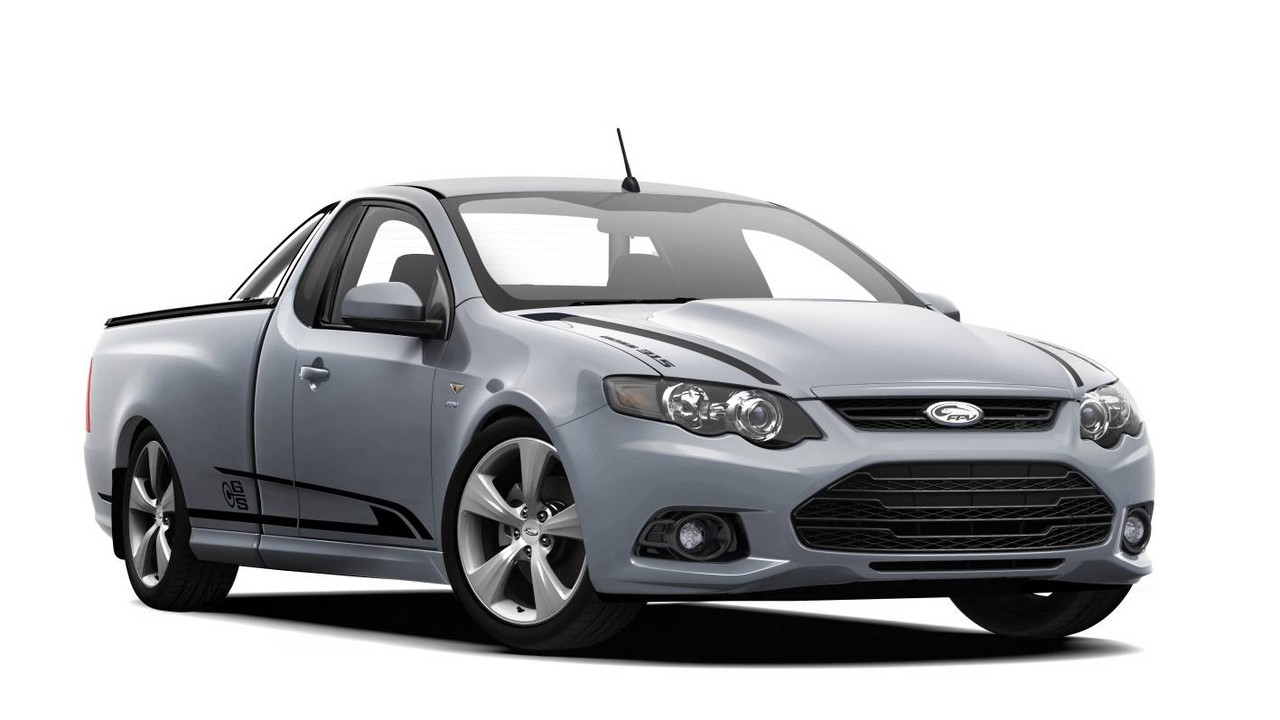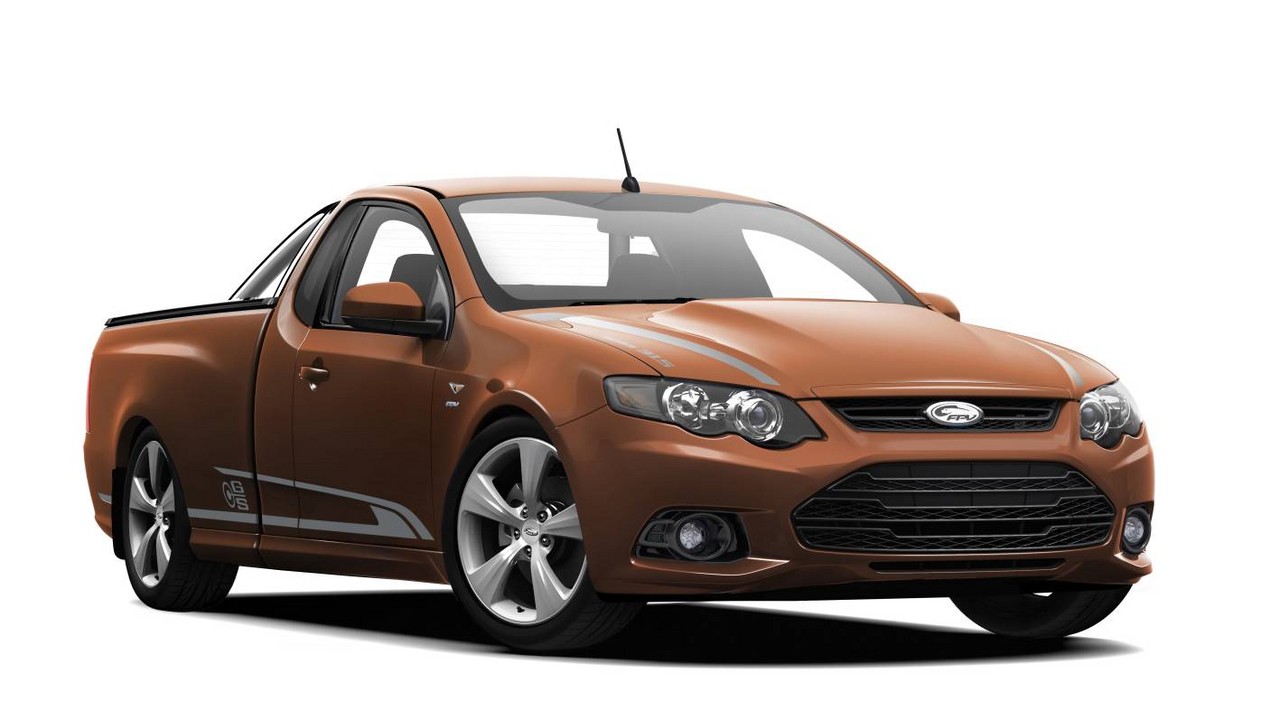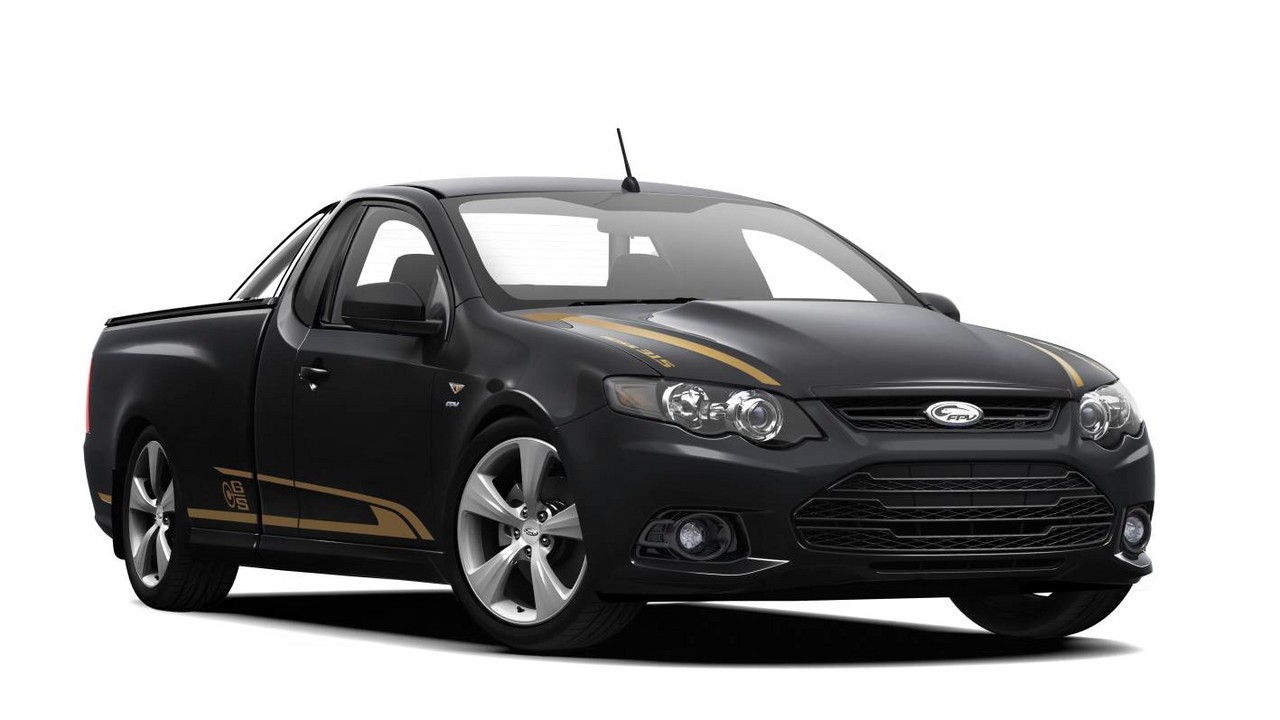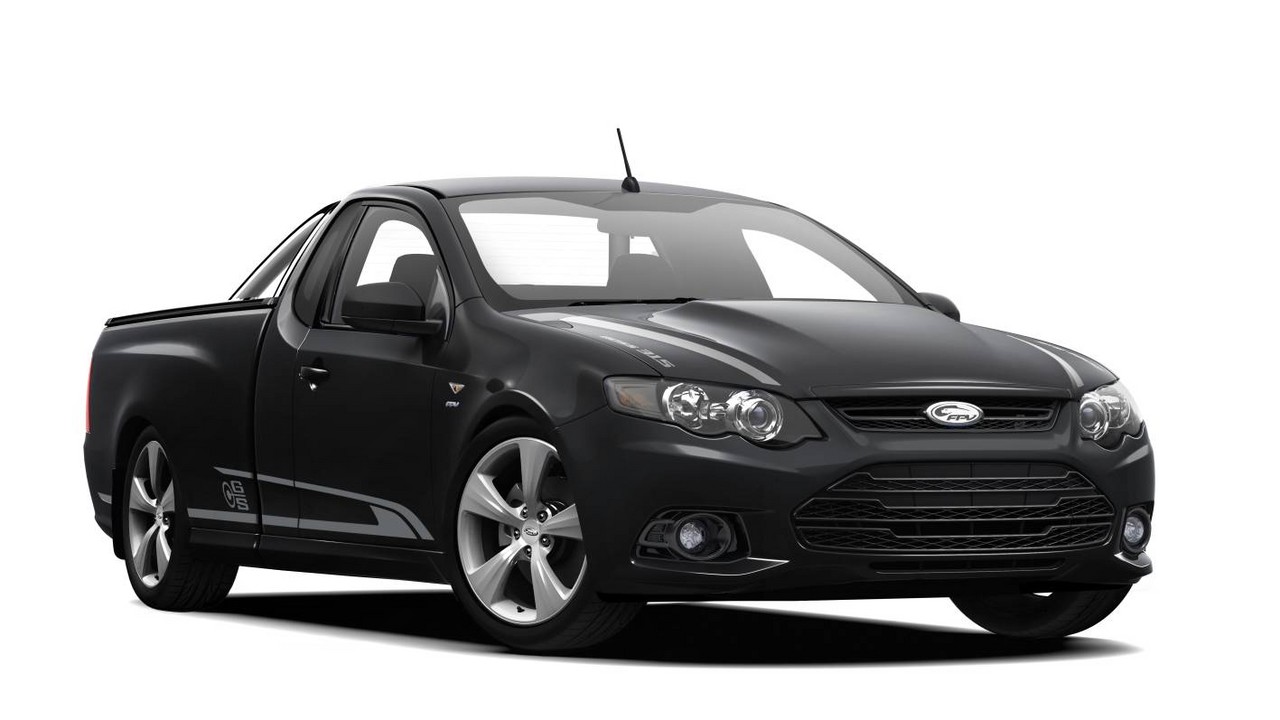
- Powerful ‘Boss 302’ and ‘Boss 315’ V8 engines
- Refined six-speed ZF automatic transmission
- Accurate, well-weighted steering
- Generally impressive dynamics…
- … but leaf spring rear suspension struggles for traction on uneven surfaces
- For ZF transmission, coolant lines in heat exchanger were susceptible to failure
- Awkward driving position
- Prone to drivetrain clunks
Review: FPV FG.I GS Ute (2009-11)
Overview
Released in September 2009, the FPV FG Mk.I (FG.I) GS Ute was a rear-wheel drive, performance utility. Manufactured in Campbellfield, Victoria, and introduced as an entry-level model within the FPV range, the GS Ute was initially powered by a 5.4-litre V8 petrol engine that was mated to either six-speed automatic or manual transmissions. In October 2010, however, the 5.4-litre V8 petrol engine was replaced with a 5.0-litre supercharged V8 unit due to the introduction of Euro IV emissions standards.
Boss 302 and Boss 315 engines
Of the engines,
- The 5.4-litre Boss 302 V8 petrol engine had a cast iron block, cast aluminium cylinder head, forged steel crankshaft, cross-bolted main bearing caps, sintered connecting rods, double overhead camshafts (DOHC) per cylinder bank, roller finger followers, four valves per cylinder, twin knock sensors, coil on plug ignition and a compression ratio of 11.0:1. Compared to Boss 315 engine in the FPV GT Series, the Boss 302 engine differed in that it had a recalibrated ECU and lower 6000 rpm maximum engine speed; and,
- Developed in Australia by Prodrive at a cost of $36 million, the 5.0-litre Boss 315 Miami V8 engine was based on Ford’s Coyote V8 engine that was introduced in the 2010 Ford Mustang GT. The hand-built Miami V8 engine had an aluminium block and cylinder head, an HTV 1900 supercharger (developed by Harrop Engineering and using Eaton Twin Vortices Series technology) providing maximum boost pressure of 0.34 bar (4.93 psi), a forged steel crankshaft, powder sintered forged connecting rods, double overhead camshafts, variable intake camshaft timing, roller finger followers, four valves per cylinder, and a compression ratio of 9.25:1. Due to its aluminium construction, the supercharged Boss 315 engine was 47kg lighter than the Boss 302 engine.
Transmissions
The FPV GS Ute was available with six-speed Tremec TR6060 manual or six-speed ZF 6HP26 automatic transmissions.
Replacing the Tremec T56 manual transmission, the Tremec TR6060 had triple synchromesh on first and second gears and double synchromesh on all other gears (including revrese) which reduced gear shift efforts and shift travel. The reduced shift travel also provided increased space for the use of larger, stronger gears for greater durability.
The FPV GS Ute was fitted with the high-performance ZF 6HP26 transmission which was rated for 600 Nm applications and had upgraded clutches with extra plates in the clutch packs. For the FG range, the 6HP26 transmission had a cylinder cut function whereby the fuel injectors would be deactivated during gearshifts to reduce shift times.
For the supercharged Boss 315 engine,
- The TR6060 transmission was fitted with a new bell-housing to suit a new twin-plate clutch system (shared with the Mustang GT500) and revised second gear synchros were implemented;
- The 6HP26 transmission was upgraded with a new 7-plate clutch pack and 4-planet planetary gearset for improved torque capacity.
Dimensions
The FG GS Ute was 5096 mm long, 1933 mm wide, 1481 mm tall and had 3100 mm long wheelbase.
Suspension
The FG Falcon Ute’s double wishbone front suspension had two lower ball joints that connected the separate lower arms to the suspension knuckle. These two lower links created a virtual pivot of the lower arm – hence the ‘Virtual Pivot Control Link’ name – and allowed the suspension to behave as though the lower pivot point was at the intersection of the two arms. At the rear, the Hotchkiss rear suspension consisted of a live rear axle with leaf springs.
| Engine | Years | Trans. | Peak power | Peak torque | |
|---|---|---|---|---|---|
| GS Ute | 5.4-litre Boss 302 petrol V8 | 2009-10 | 6sp auto, 6sp man. |
302 kW at 6000 rpm | 551 Nm at 4750 rpm |
| 5.0-litre super-charged Miami petrol V8 | 2010-11 | 6sp auto, 6sp man. |
315 kW at 5750 rpm | 545 Nm at 2000-5500 rpm |
Safety equipment
Standard safety equipment for the FPV FG GS Ute included dual front airbags, seat-mounted head/thorax-protecting side airbags, ABS, brake assist, electronic brake force distribution, electronic stability control, traction control and front seatbelts with pretensioners and load limiters.
Brakes
Like the Ford FG Falcon Ute XR6 Turbo and XR8 , the FPV FG GS had 322 mm by 28 mm vented front brake discs with two-piston calipers and 328 mm by 26 mm solid rear discs with single piston calipers.
ANCAP crash testing
In ANCAP crash testing , a similarly equipped FG Falcon Ute received a five star adult occupant protection rating with a score of 33.58 out of 37. In the offset crash test, there was a slight risk of serious chest injury for both front occupants and a slight risk of serious lower leg injury for the front passenger. In the side impact test, there was a slight risk of serious chest injury for the driver.
Features
Like the FG Pursuit , standard features for the FPV FG GS Ute included 19-inch alloy a wheels, a four speaker sound system with a six-disc CD player and auxiliary inputs (MP3/iPod), a seven-inch colour display, four-way power adjustable cloth seats, cruise control with speed alert, automatic headlights, Bluetooth connectivity, a leather-wrapped steering wheel, remote central locking, power mirrors and windows, a height and reach adjustable steering wheel, 12 volt power outlet, trip computer, soft tonneau cover and an immobiliser. Unlike the Pursuit, however, the GS was fitted dual-zone climate control air conditioning (rather than single-zone).
Brochure
Review: FPV FG.II GS Ute (2011-14)
Overview
Released in December 2011, the FG Mk.II (FG.II) GS Ute introduced subtle interior and exterior updates. Inside, there was a new Interior Command Centre (ICC) with an eight-inch colour touchscreen infotainment system and auxiliary USB input for the use of memory sticks, flash drives and external powered hard drives with memory support up to 1TB.
Visually, the FG.II GS Ute could be identified by its new lighting package with ‘precision design’ projector headlights and black bezels, front fascia and bumpers with winglets and pronounced sculpting around the fog lights and lower grille, black grille mesh, chrome/silver fog light accents and sports bar.
| Engine | Years | Trans. | Peak power | Peak torque | |
|---|---|---|---|---|---|
| GS Ute | 5.0-litre s/charged Miami petrol V8 | 2011-14 | 6sp auto, 6sp man. |
315 kW at 5750 rpm | 545 Nm at 2000-5500 rpm |
Features
Compared to its FG.I predecessor, standard features for the FG.II GS Ute were extended to include a prestige audio system, rear parking sensors and alarm.
Brochures
Related links
